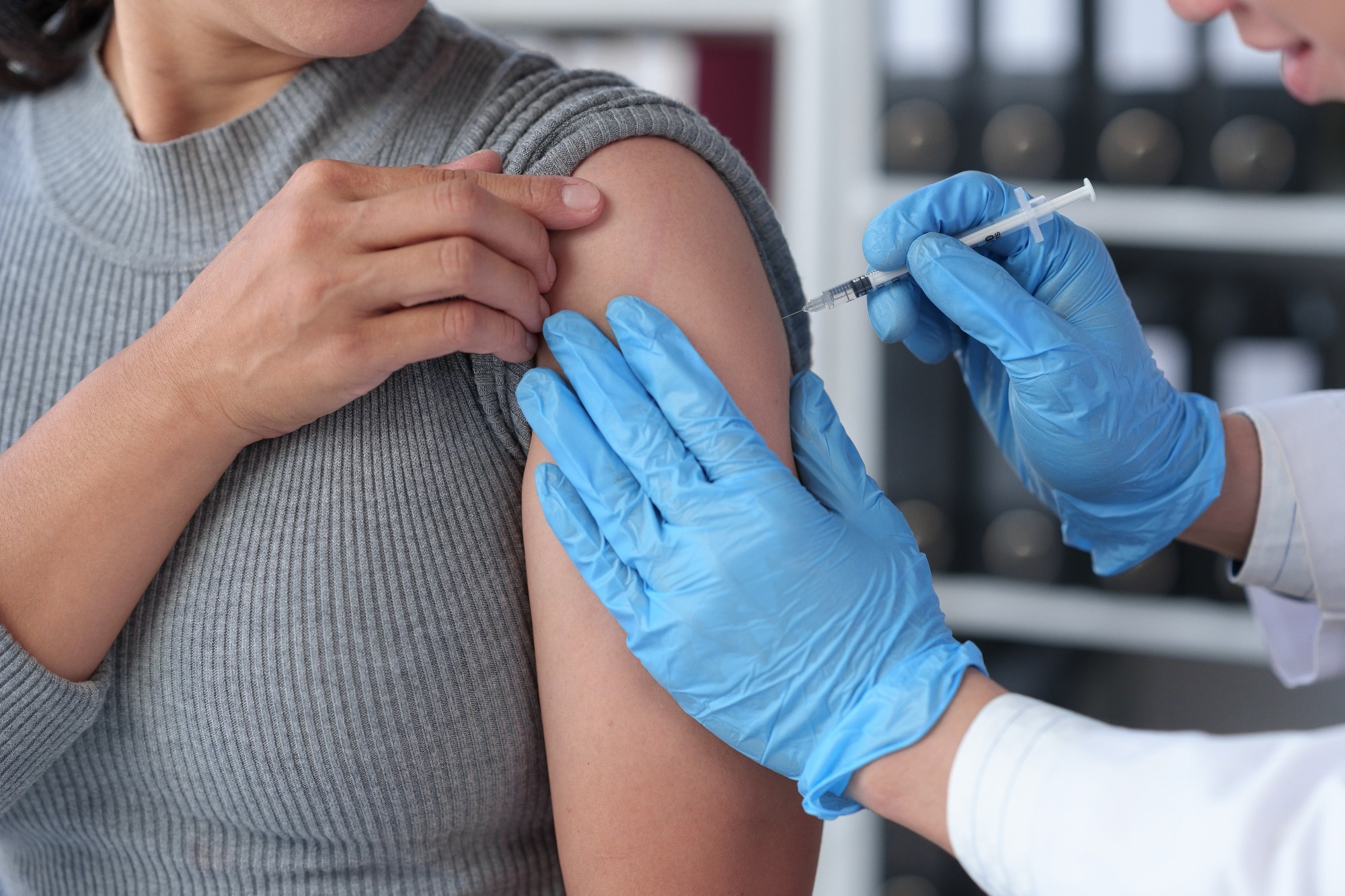A new study shows that artificial intelligence can beat traditional methods in picking flu vaccine strains, offering a way to boost effectiveness and reduce the global burden of influenza.
 Study: Influenza vaccine strain selection with an AI-based evolutionary and antigenicity model. Image credit: PreciousJ/Shutterstock.com
Study: Influenza vaccine strain selection with an AI-based evolutionary and antigenicity model. Image credit: PreciousJ/Shutterstock.com
A recent paper in Nature Medicine explores how artificial intelligence could help select better matches among flu vaccine candidates. The influenza virus undergoes rapid genetic and phenotypic change from one season to the next. Therefore, vaccination against influenza averaged below 40% between 2012 and 2021. Vaccine effectiveness refers to reducing the odds of influenza among those who got their flu shots relative to those who did not.
Introduction
The World Health Organization (WHO) currently selects the optimal influenza vaccine strains for each upcoming flu season to achieve the best vaccine effectiveness. Various bodies, like the Centers for Disease Control and Prevention (CDC) and surveillance networks in Europe and Canada, analyze this data after the season based on patients with influenza who required medical care.
When the WHO strain is well matched with the antigens of the circulating strains, vaccine effectiveness may be up to 40% to 60% in that season. However, the CDC reported low effectiveness (<40%) in half the years between 2012 and 2021, on average across age groups and subtypes. In 2014-2015, for instance, it stood at 19%. Low vaccine effectiveness is associated with higher hospitalization rates for influenza.
Inactivated influenza vaccines take about 6-9 months to produce, requiring selection of the most relevant vaccine strains before each flu season. Mismatches are common, but experimental prediction methods are neither cost-effective nor feasible due to inadequate viral specimens.
The current study represents a fresh attempt to predict antigenic matches between vaccine and circulating flu virus strains. This is a basic need for any effective flu vaccine. Such matching is based on two aspects: The viral genotype distribution during a given flu season, which reveals the dominant strain at that time, and the antigenicity of each vaccine (how well the vaccine-induced antibodies inhibit a given viral strain).
This study generated “coverage scores” to measure a vaccine’s antigenic match. This score reflects, on average, how well the vaccine antibodies counter antigens on multiple circulating strains, adjusted for the relative dominance of each strain.
The researchers examined ten years’ worth of virus sequences and antigenicity data in a retrospective analysis using their platform, VaxSeer. This machine-learning model is trained to predict the vaccine candidate with the highest coverage score.
The model uses the dataset of viral protein sequences in prior seasons and years to understand how mutations in hemagglutinin sequences affect the shift in dominance. Based on this, it predicts the dominant circulating strain for the coming season. Unlike the rigid strategy used in conventional epidemiological studies, it uses a nuanced approach to mutations in the protein-coding sequences.
By matching predicted with actual dominance, the researchers trained two language models that parameterize an ordinary differential equation (ODE) to capture dynamic shifts in strain dominance over time. The change in dominance is coupled with an estimate of the rate of change, allowing the model to predict which strain will be dominant at a time of interest.
Additionally, the model predicts antigenicity matching between vaccine and circulating virus strains without the need for actual antigenicity experiments.
The current study focused on two virus subtypes: A/H3N2 and A/H1N1. The model was used to estimate the coverage score for various vaccine candidates. This was then compared with actual vaccine effectiveness and with the CDC estimate of reduction in clinical disease burden in the USA due to the vaccines.
Study findings
The study showed that VaxSeer consistently predicted vaccine strains with better antigenic matches for the circulating strains, compared to the WHO recommendation. Using empirical coverage scores, VaxSeer outperformed the WHO recommendation in six of 10 years for H1N1 and nine of 10 years for H3N2.
During the study decade, the VaxSeer model selected the best vaccine strain in seven years for H1N1 and five years for the H3N2 strain. Conversely, the WHO-recommended strain matched the best antigenic strain only three times in these ten years for H1N1 and failed to do so for H3N2.
Interestingly, multiple vaccine candidate strains have higher coverage scores than the subset tested so far. “This highlights the possibility that there may exist even more effective vaccine strains waiting to be discovered.”
In contrast with the WHO recommendation, VaxSeer focuses on the vaccine strain that effectively inhibits most circulating strains, especially those actively expanding.
The predicted coverage score correlated well with the vaccine’s effectiveness as estimated by the CDC, I-MOVE (Europe), and SPSN (Canada), and with a reduction in the clinical influenza burden post-vaccination.
Conclusions
Machine learning models hold promise in selecting vaccine candidates with high antigenic matching, associated with higher vaccine effectiveness and a lower disease burden in real life.
Even though the current study focused on just antigenicity-dominance matching for vaccine effectiveness and did not consider other influences such as immune history or vaccine production methods, the results emphasize the potentially strong utility of this platform in selecting flu vaccine strains.
Theoretically, this model could predict coverage scores for any vaccine. However, this will need rigorous validation when applied to vaccines that are very different from the ones used to train these models.
The authors stress that VaxSeer is not intended to replace the WHO process, but to serve as a complementary, selective screening tool that can prioritize vaccine strains before resource-intensive laboratory validation.
Overall, “this study showcases the potential of machine learning to assist humans in the discovery of more effective vaccines.”
Download your PDF copy now!
Journal reference:
- Shi, W., Wohlwend, J., Wu, M., et al. (2025). Influenza vaccine strain selection with an AI-based evolutionary and antigenicity model. Nature Medicine. doi: https://doi.org/10.1038/s41591-025-03917-y. https://www.nature.com/articles/s41591-025-03917-y